My first farm was U.R. Organic on the Upper Rogue River near Prospect, Oregon.
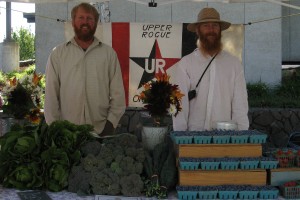
Eric left and Ryan right

Braided garlic
The Farm
The farmers are brothers Eric and Ryan, and Eric’s wife Amy. According to Ryan, the farm’s roots go back to his love for making salad dressing with lots of garlic. He learned about growing garlic when he worked on a garlic farm in California. The farm was owned by a cocktail waitress who got the land for free from the forest service. She hadn’t farmed before so she was also learning about growing garlic. From that experience, Ryan came back to Oregon and worked with Eric to grow garlic on a ten acre piece of property their mother had acquired for them in the late 1990s.
The land was used as a hay farm, and five of the acres are still used to grow hay. What impressed me is the brothers built everything on the farm. They put in the irrigation system, built the tool sheds, put up the fencing and bird nets, prepared the soil, and even designed and are building the house.
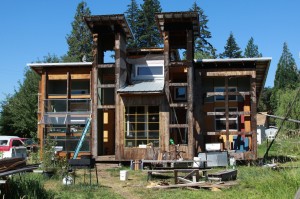
The unfinished house designed by Eric
There is more than garlic on the one-and-a-half acres that is cultivated. Berries are the other important crop. They have blueberries, strawberries, black currants and delicious raspberries. Lesser crops are the usual greens and flowers, which include Mexican sunflowers with their distinctive, unusually colored heads. An older orchard surrounds one side of the garden and supplies apples for cider.
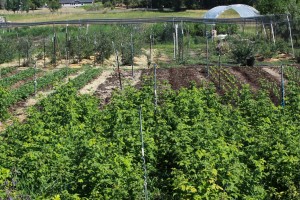
The farm
There is a new law in Oregon that allows farmers to sell high-acid foods at the farmers markets without having commercial kitchen. UR Organic specialties are jams, salsas and pickles.
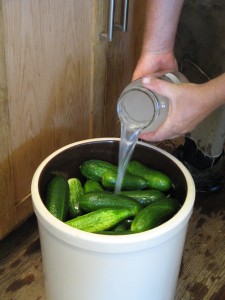
Making a fresh batch of pickles
My Farming Experience
My day started at around 6:45 am when I crawled out of my tent and made my way over to the house for breakfast. Breakfast was usually yogurt and granola mixed with homemade raspberry jam and my secret ingredient, peanut butter. The work we did depended on the day of the week. On Mondays and Fridays, the days before the Ashland markets, we picked berries in the mornings from eight till noon; ate homemade hummus, bread and salad for lunch; cleaned and braided garlic in the early afternoons from one till three; took a three hour siesta from three till six; harvested vegetables and collected flowers for bouquets in the early evenings so they’d stay fresh; and ate dinner at around nine. On the other days, we followed the same schedule but we did all the other jobs that are required of farming: weeding, pulling garlic, planting new seedlings, putting up wires for the raspberries, more weeding. We all worked together and there was usually lively conversation. Ryan was a goldmine of information. I could ask him anything about plants or farming and he would give me a detailed answer that I hoped I could remember until I had a chance to write it down. Important tidbits I learned from him were to diversify the products you sell, to realize that new farmers will make a lot of mistakes and peanut skins make good compost.
During siesta time while the farmers snored peacefully in the house, I would drive a few miles down the road and visit the local waterfalls along the Rogue River. The Rogue River Siskiyou National Forest begins about ten minutes down the road. It’s a beautiful area of Shasta Red firs, old growth Douglas firs, Lodgepole pines, and an understory of Oregon Grape. A good place to relax, meditate, read a book, and doze.
It was brutally hot during the days I was there, but it cooled off by six in the evening. I really enjoyed working at that time of day. The temperature was pleasant and I was outdoors to see the Golden Hour of pink light turn everything pastel. It was not a problem waiting to have dinner at nine o’clock.
Dinners were usually fixed by Amy. When there were a lot of WWOOFers or guests, we ate outside by candlelight at a picnic table. I quite liked spooning mysterious food out of a dark pot. I couldn’t see what it was, but I knew it would be delicious. Again, I really enjoyed being outside. When there was a smaller group, we sat indoors at the circular table in the kitchen. Taco night was a particular favorite. Amy on occasion made tortillas on a tortilla press, and then heated them on the open flame of the stove. Eric gilled the chicken, covering it with a course grind of salt and pepper. The toppings were traditional Mexican: chopped onions, cilantro, lime wedges and homemade salsa.
On market days, Saturdays and Tuesdays, I had the day off. I usually went hiking. Crater Lake National Park was down the road. About 5,000 years ago, Mt. Mazama blew its top. The sides of the volcano collapsed and formed a crater. Snow and rain eventually made a lake in the crater. It’s famed for its stunningly clear, blue water. I hiked along the rim. Amazingly, with all the tourists that were there, I saw no one on one of my rim hikes. Rogue River Siskiyou National Forest is between Prospect and Crater Lake National Park. There are abundant hiking trails, but I only did one hike in the National Forest. It was the Seven Lakes Basin trail. I ended up at the exact spot that is on the cover of the 100 Hikes in Southern Oregon guidebook.
We were in the 4th of July parade in Ashland. Check out the video, and don’t forget to turn on the volume.
http://www.youtube.com/watch?v=j3xFRG3JOTs

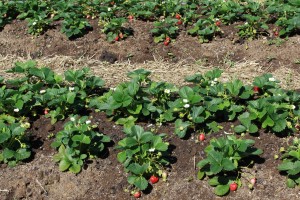


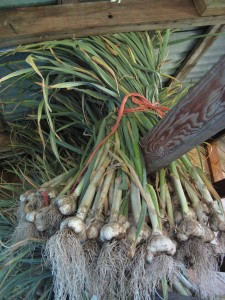
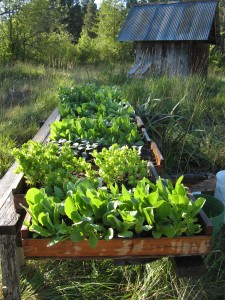

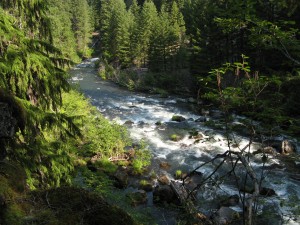
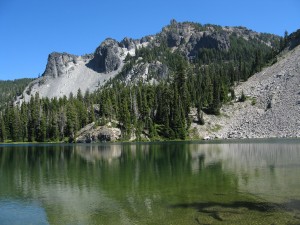

This is my favorite farm for you so far! Sounds like a really awesome place.